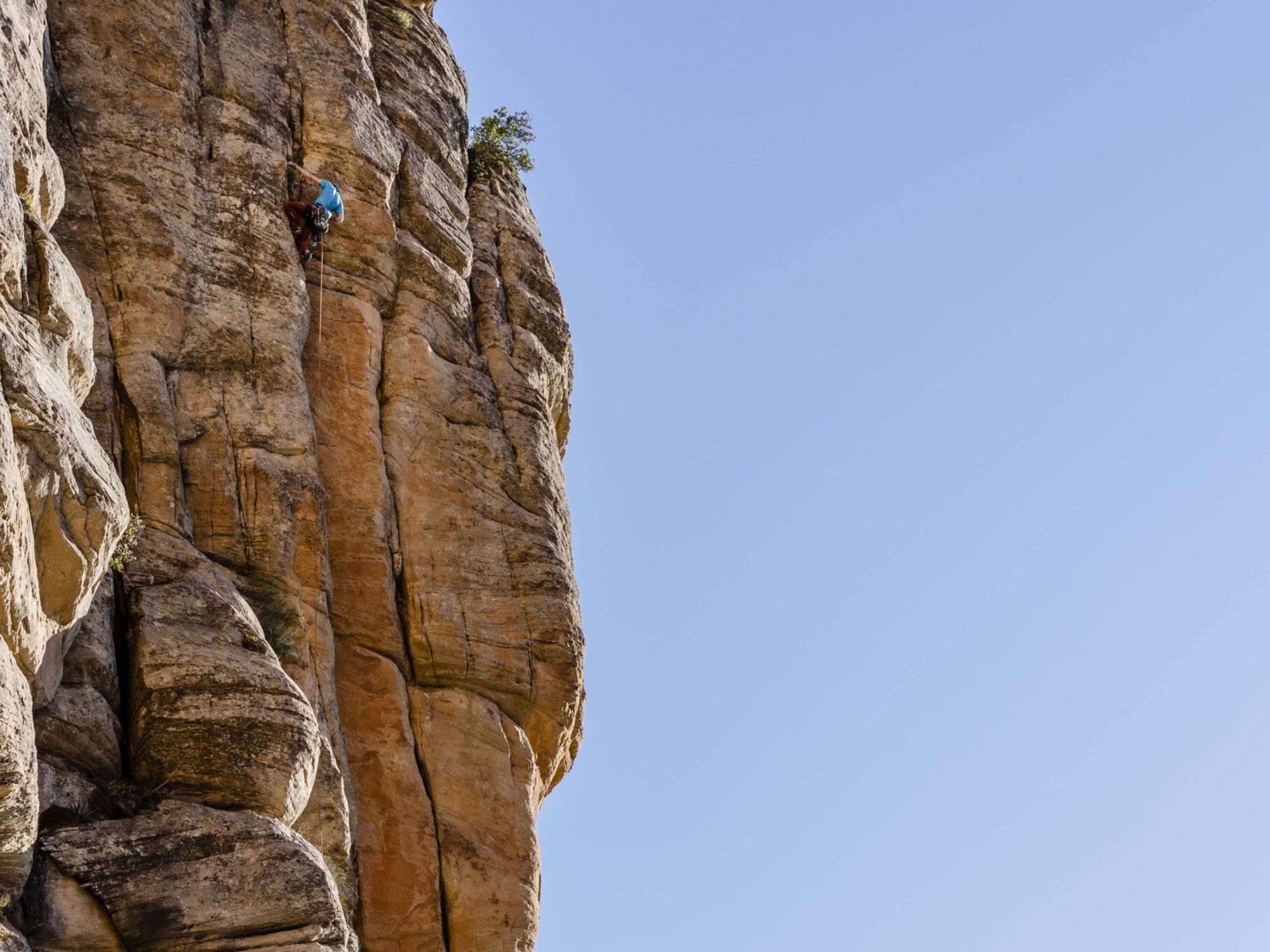From roadside sport crags to back country big walls, Dakota Walz has established miles of new rock climbs across Utah, Colorado, Wyoming, and beyond. Follow along in this 3-part series as he shares his secrets on the dark art of ground up new routing.
by Dakota Walz
Now that we’ve found a line and gathered our gear, it’s time to start rock climbing. Remember, there’s no knowing what challenges the rock may throw at you. Loose stone, difficult or impossible-to-predict climbing, and tricky path-finding are always on the menu.
On top of that, there are many different styles you can use to establish a new route, and how you do it will come down to your personal desires. We don’t have room to go over them all here, so the following scenario will be viewed from the perspective that the route we’ve chosen to climb is accessible to others, is a quality route worth repeating, and that we want to leave it in a state so that others may enjoy climbing it after us.
First, I always make sure I have a good idea of where the route will lead, where I might establish temporary or permanent belays, and how I’ll get back down. Will I be able to safely walk off from the top, or will I need to establish rappels? Will I be able to rappel the route, or does it wander so much that I’ll need to establish a separate rappel route?
Before I leave the ground, I always make sure my belay is as safe as possible. Remember that rockfall incident at Zion National Park (see Part I)? It was no miracle that none of our ropes or other gear were damaged. Before starting up the first pitch, we purposely positioned all of our equipment so it was out of the immediate drop zone from the route. This could be under a roof near the base, or just a distance away from the leader’s intended path. Whether you’re just leaving the ground or leaving a hanging belay on pitch 13, always consider how your belayer and equipment can best avoid being a target for loose rock.
Our harness is weighed down with tons of gear, we’re tied into the sharp end of the lead line, our tag line is on the back of our harness with a locker, both ropes are stacked, and our bolt kit is ready to be tagged in case we need it. Time to climb.
.png)

